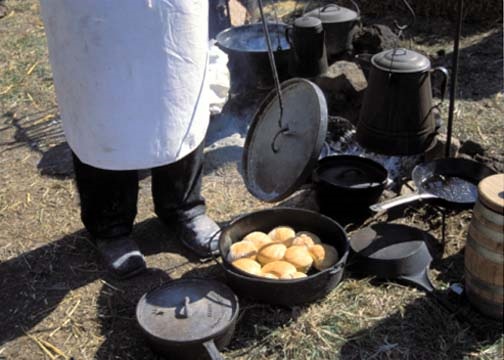
Biscuits in a Dutch oven.
This is Passport to Texas
Cast iron Dutch ovens have been around a long time.
05—You may have seen something that your grandmother had –an old pot that she sat on the stove that was black.
Tim Spice is a Dutch Oven enthusiast. The ovens have changed little since great-grandma’s day, except some now come pre-seasoned.
18—You know, what’s neat is, in the last couple of years, one of the major manufacturers has come out with a pre-seasoned Dutch oven. And I swore as a purist I wouldn’t buy one, and I did get one, and wow – already seasoned – it was fabulous. Jump right in and start cooking.
If you prefer to season it the old fashioned way – use it.
13—And after you cook a few times it will be season. And what we mean by ‘seasoned’ is, as you cook, micro-layers of carbon build up on the cast iron, and gives it a non-stick quality.
Groups, such as the Lone Star Dutch Oven Society are dedicated to preserving this kind of cookery.
12—And you can just do a search on your favorite engine, and you’ll find lots of different things. Some of these groups have ‘dogs’ is what they call them – Dutch oven gatherings – where they get together and they just all cook their favorite food, and have a grand old time.
Find recipes and links to Dutch oven groups at passporttotexas.org.
That’s our show for today… For Texas Parks and Wildlife…I’m Cecilia Nasti.
____________________________________________
LONE STAR DUTCH OVEN SOCIETY: http://www.lsdos.com/index2.html [copy and paste link into your browser]
RECIPES FROM TIM SPICE
Hello folks. It is easy to get started with Dutch Ovens cooking. Here are some simple and great recipes! You want to cook these over a 350-degree heat. And to determine that, place your hand six-inches over the hot coals and count — one Mississippi…two Mississippi…three Mississippi…. If you can keep your hand over the coals for three seconds, then you have a temperature of 350-degrees. TS
CHICKEN STEW
Heat your Dutch oven over the coals with 1/8 inch of vegetable oil. When it is hot (not smoking), carefully place a cut up chicken in the oil and brown the chicken on both sides. When the chicken is browned cover the chicken with stock, (I use pre-made stock from the grocery).
Dice half an onion, place in the pot with one Bay leaf and some salt and pepper. Simmer over medium heat for 15 minutes. Add potatoes, carrots and celery and continue to simmer until the chicken falls off the bone, approximately 45 minutes.
When the chicken is done, you may thicken the stew with flour or cornstarch.
For an added bonus, get some biscuit mix and make dumpling in a plastic baggie. Cut a hole in one corner and squeeze out golf ball sized dough right on the top of the stew. Cover and heat until the dumplings are done in the middle. Add a few more coals to the top for a golden brown dumpling.
NOTE: You can use this same recipe to make beef stew by just substituting beef for the chicken.
COBBLER
Nothing beats a hot cobbler sitting around the campfire!
Start with canned fruit. (Peaches for the traditionalist.) For a 12 inch Dutch, 4 standard size cans will do. I use 2 cans of fruit and two cans of fruit pie filling.
Drain the fruit and reserve the liquid. Place the fruit and a few dabs of butter in the Dutch oven along with brown sugar and cinnamon. (I have a big sweet tooth so I use up to a cup of brown sugar, you may use less or none at all.)
Next, take 1/2 a box of yellow cake mix and place it in a plastic baggie. Mix with the reserved fruit juice and water until it is a little thicker than cake batter. Cut a small hole in one corner and pipe the batter on top of the fruit mixture. Then take a handful of dry mix and sprinkle on top of the cobbler.
Place the Dutch oven on the coals and maintain a 350-degree oven for approximately 45 minutes. If the top is not browning after 30 minutes add more coals to the top.
If the fruit filling is not bubbling gently, add more coals to the bottom. Finally, 5 minutes before the cobbler is done sprinkle with pecans. GUARANTEED TO PLEASE!
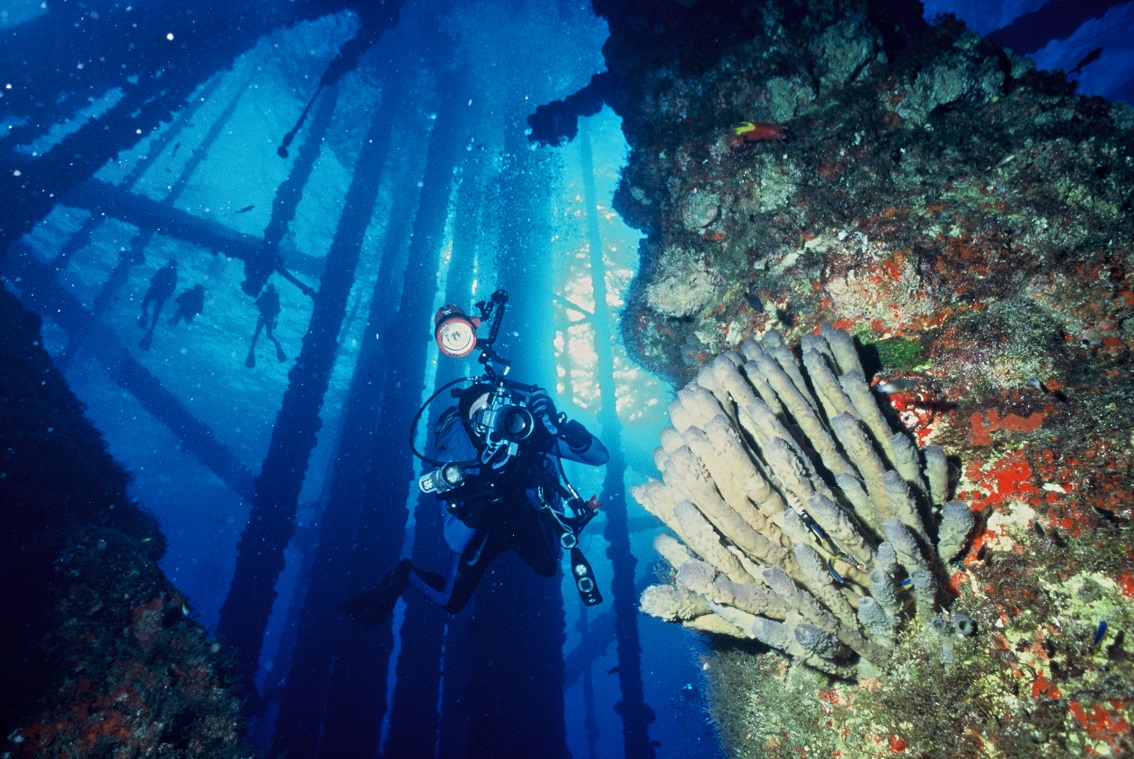

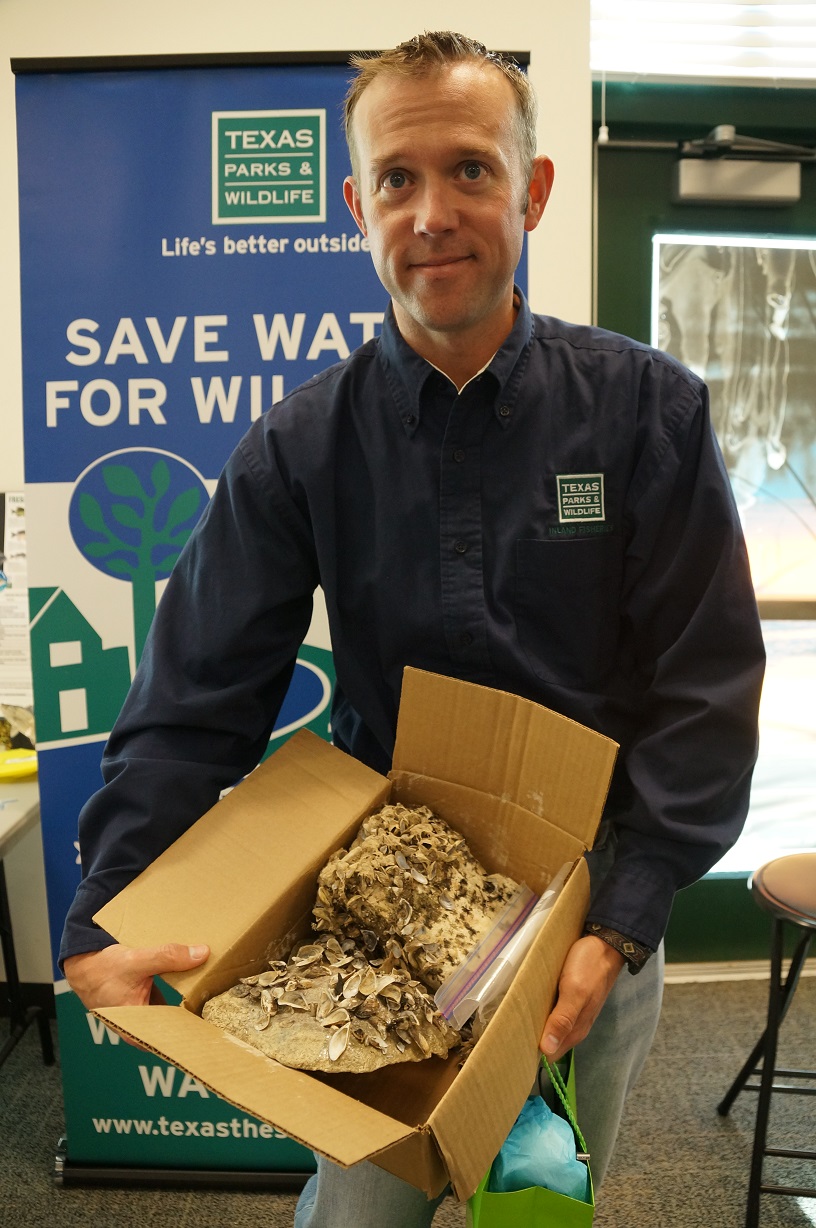
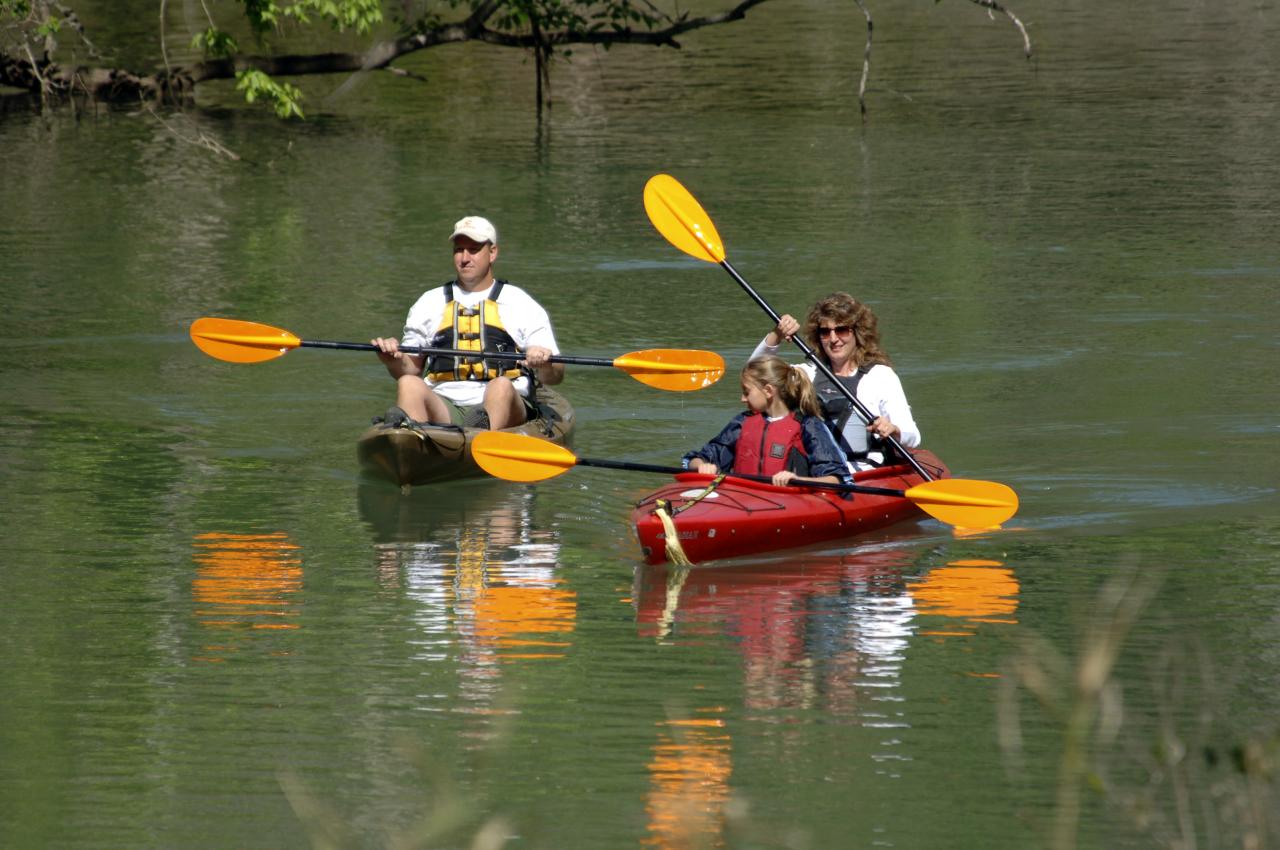
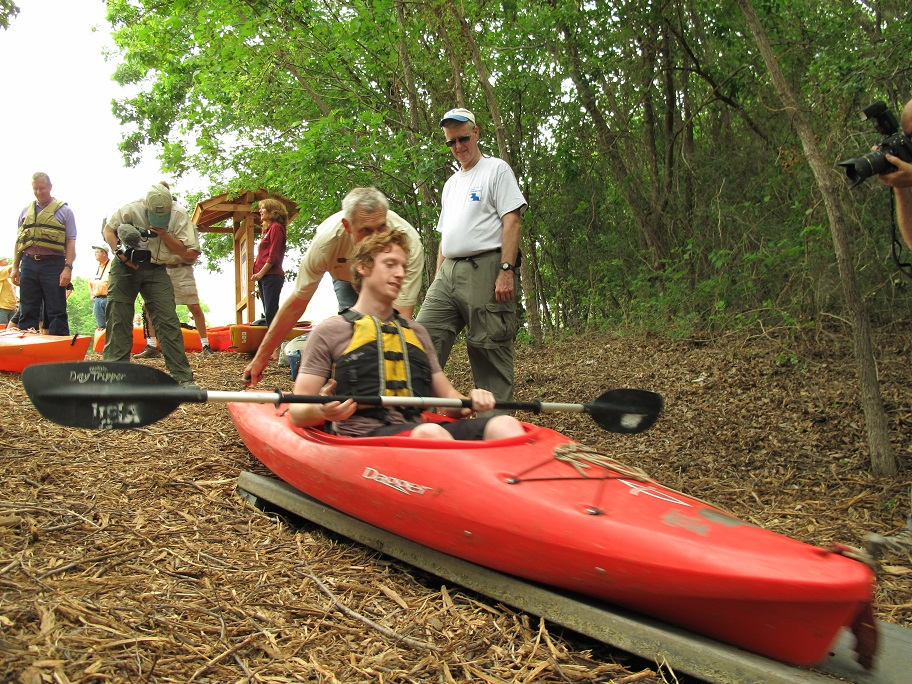


 Passport to Texas is a
Passport to Texas is a  Passport to Texas is made available by:
Passport to Texas is made available by: